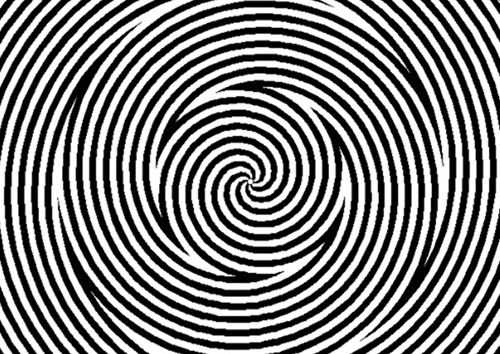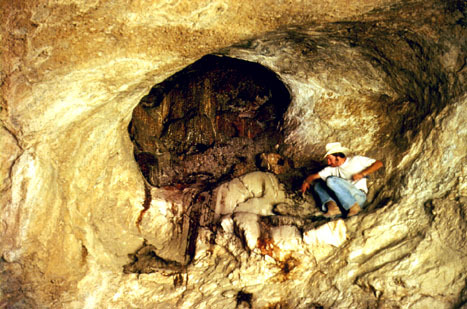MARTIAN STORMS - Seen In 1977 By The Viking 2 Orbiter


MARTIAN STORMS - Seen in 1977 by the Viking 2 Orbiter
“Like its predecessor, the Viking 2 mission consisted of a lander and an orbiter designed to take high-resolution images, and study the Martian surface and atmosphere. Both the Viking 1 and 2 landers benefited greatly from their orbiting counterparts, which snapped images that helped mission controllers navigate the landers to safe landing sites.”
This particular image was taken by the Viking 2 Orbiter and shows a massive dust storm on the red planet. This spectacular storm can be seen on a global scale. The Viking 2 mission would end 3 years later on April 11, 1980.
Credit: NASA/JPL
More Posts from Study-astronomy-biology-ref and Others

Infographic about Planet 9, the required planet to explain the trajectory of six of the most distand known Kuiper Belt Objects.
Source: http://imgur.com/S5faizX

Baobab & Milky Way
A baobab tree and the central band of the Milky Way galaxy in the village of Antsiraraka in Madagscar, July 2010.
Credit: Florian Breuer


SwRI’s Parker discovers moon over Makemake in the Kuiper Belt A Southwest Research Institute-led team has discovered an elusive, dark moon orbiting Makemake, one of the “big four” dwarf planets populating the Kuiper Belt region at the edge of our solar system. The findings are detailed in the paper “Discovery of a Makemakean Moon,” published in the June 27 issue of Astrophysical Journal Letters.
“Makemake’s moon proves that there are still wild things waiting to be discovered, even in places people have already looked,” said Dr. Alex Parker, lead author of the paper and the SwRI astronomer credited with discovering the satellite. Parker spotted a faint point of light close to the dwarf planet using data from Hubble’s Wide Field Camera 3. “Makemake’s moon – nicknamed MK2 – is very dark, 1,300 times fainter than the dwarf planet.”
A nearly edge-on orbital configuration helped it evade detection, placing it deep within the glare of the icy dwarf during a substantial fraction of its orbit. Makemake is one of the largest and brightest known Kuiper Belt Objects (KBOs), second only to Pluto. The moon is likely less than 100 miles wide while its parent dwarf planet is about 870 miles across. Discovered in 2005, Makemake is shaped like football and sheathed in frozen methane.
“With a moon, we can calculate Makemake’s mass and density,” Parker said. “We can contrast the orbits and properties of the parent dwarf and its moon, to understand the origin and history of the system. We can compare Makemake and its moon to other systems, and broaden our understanding of the processes that shaped the evolution of our solar system.”
With the discovery of MK2, all four of the currently designated dwarf planets are known to host one or more satellites. The fact that Makemake’s satellite went unseen despite previous searches suggests that other large KBOs may host hidden moons.
Prior to this discovery, the lack of a satellite for Makemake suggested that it had escaped a past giant impact. Now, scientists will be looking at its density to determine if it was formed by a giant collision or if it was grabbed by the parent dwarf’s gravity. The apparent ubiquity of moons orbiting KBO dwarf planets supports the idea that giant collisions are a near-universal fixture in the histories of these distant worlds.
top Image: illustration shows Makemake’s bright red surface and the inferred darker surface of the moon, known as MK2. Image Courtesy of NASA/SwRI/Alex Parker
lower Image: Different views of the Makemake system taken two days apart. Image Courtesy of NASA/Hubble WFC3/SwRI/Alex Parker

There’s a rare type of blood that’s shared by only 43 people in the entire world.
‘Rhnull’ blood doesn’t contain any of the Rh antigens that 99.9% of humans have. It’s often called ‘golden blood’ because it can be given to anyone who has a rare Rh blood type, but there are only 9 active donors, so it’s only used in extreme circumstances.
(Source, Source 2)




Colourised footage of Benjamin, the last know Tasmanian Tiger (Thylacine).
Benjamin died on September 7th, 1936 in Hobart zoo. It is believed that he died out of neglect, as he was locked out of his shelter and was exposed to the searing hot sun and freezing cold night of Tasmania.
The Thylacine was one of the last large marsupials left on Australia (the other being the Kangaroo) after a great extinction event occurred around 40 thousand years ago. This extinction event, caused mainly by the arrival of humans, wiped out 90% of Australia’s terrestrial vertebrates, including the famous Megafauna.
The Thylacine was around 15-30kg (33-66lbs), were carnivorous, and had numerous similarities to other species like dogs, despite not being related and purely by chance, in a phenomenon known as convergent evolution (just like the ability to fly of bats and birds, despite following different evolutionary paths). Not only that, they could open their jaws up to 120 degrees, could hop around on two legs like a kangaroo, and both males and females had pouches.
Lastly in a cruel twist, the Tasmanian government decided to protect the Thylacine - just 59 days before the last one died, in a very notable case case of “Too little too late”. To date, many biologists believe that there are still Thylacine roaming the wild plains of Australia.



The solar eclipse that occurred in Chile on July 2, 2019 photographed by Dan Marker-Moore. Great job!
Via Colossal







Well, this is definitely the most fun I’ve had while making a post.
Inspired by this one from capnphaggit. Images & copyrights: Trifid Nebula (M20) by Marcus Davies, The Cat’s Eye Nebula and Star-forming region Sharpless 2-106 by NASA, ESA, the Hubble Heritage Team (STScI/AURA). Please don’t remove the credits.

wait what

…

turns out that pack rats (Neotoma sp.) creates these big middens which they urinate on. The urine then crystallizes over time, creating amber-like deposits. Some of the ones found in caves are 50.000 years old and contains intact plant material, allowing scientists to analyse the prehistoric flora.


the dark deposits in the middle are 10.000+ year old crystallized rat piss
what a world




“NEW GALAXY DISCOVERED ORBITING THE MILKY WAY” You would think that scientists would have already discovered most of the galaxies around the Milky Way, but that does not seem to be the case. Astronomers have recently detected a dwarf galaxy orbiting the Milky Way called the Crater 2 dwarf. This galaxy was discovered through measuring its ‘half-light diameter’. Since galaxies don’t have actual definitive edges, astronomers measure galaxies by looking at the brightest part of the galaxy where half of the total amount of light from the it is emitted - half-light diameter. This galaxy has a half-light diameter of 7000 light years, which would look twice as big as the full moon if we could see it with the naked eye. Gabriel Torrealba and his colleagues at the University of Cambridge, the team that discovered this galaxy, was only able to find it by using a computer that looked for over-densities of stars in data (hinting at the possibilities of galaxies or something else) from images taken by a telescope in Chile. The galaxy has eluded the detection of the scientific community for so long only because its stars are spread out so thinly, giving it a ghost-like appearance. In addition, this dwarf galaxy is near four other new-found objects: the Crater globular star cluster as well as three dwarf galaxies in Leo - a group of objects that is now falling towards the Milky Way. Interestingly, this galaxy is quite new due to it retaining a round shape suggesting that it had never encountered a giant galaxy, otherwise gravity would have bent the dwarf out of shape.
Read more about this fascinating story on: https://www.newscientist.com/article/2084438-never-before-seen-galaxy-spotted-orbiting-the-milky-way/
-
 mermaid7777 reblogged this · 1 year ago
mermaid7777 reblogged this · 1 year ago -
 crazydreamsaboutyou liked this · 2 years ago
crazydreamsaboutyou liked this · 2 years ago -
 moonstar-magic liked this · 2 years ago
moonstar-magic liked this · 2 years ago -
 carnalreincarnated liked this · 2 years ago
carnalreincarnated liked this · 2 years ago -
 hellfighter8 reblogged this · 2 years ago
hellfighter8 reblogged this · 2 years ago -
 julietaipunto reblogged this · 2 years ago
julietaipunto reblogged this · 2 years ago -
 julietaipunto liked this · 2 years ago
julietaipunto liked this · 2 years ago -
 stanto30 liked this · 2 years ago
stanto30 liked this · 2 years ago -
 motormann liked this · 2 years ago
motormann liked this · 2 years ago -
 hellfighter8 liked this · 2 years ago
hellfighter8 liked this · 2 years ago -
 tangy-pisces reblogged this · 2 years ago
tangy-pisces reblogged this · 2 years ago -
 nospheratusblack liked this · 2 years ago
nospheratusblack liked this · 2 years ago -
 coffeenuts reblogged this · 2 years ago
coffeenuts reblogged this · 2 years ago -
 coffeenuts liked this · 2 years ago
coffeenuts liked this · 2 years ago -
 hobbyhermit liked this · 5 years ago
hobbyhermit liked this · 5 years ago -
 snake420s liked this · 6 years ago
snake420s liked this · 6 years ago -
 sugaarpeas liked this · 7 years ago
sugaarpeas liked this · 7 years ago -
 fa2ff liked this · 7 years ago
fa2ff liked this · 7 years ago

This is a studyblr for everyone have some passion for science, especially astronomy and biology
129 posts
